Our Environmental Impact
Here at Habitat for Humanity of the Greater La Crosse Region, sustainable practices are embedded in all our programs. In a region as unique as ours – with our signature bluffs, beautiful rivers, vibrant neighborhoods, and historic buildings – it is our responsibility to care for what we have and ensure a resilient, healthy La Crosse region for future generations.

The ReStore Property
When we grew out of our original ReStore building in 2014, we purchased an existing building rather than building something new. This reduced the amount of energy and waste typically associated with constructing a new building.
In 2016, in collaboration with La Crosse Area Waters, we created a Stormwater Learning Site on the landscape that surrounds the ReStore. We implemented multiple stormwater management best practices: a 300-gallon rainwater collection tank, five types of pervious pavement, four bio-filter rain gardens, a naturally self-irrigating hügelkultur mound garden, more than 700 native plants, raised garden beds, a raspberry patch, and multiple food producing forbs.
- Rainwater runoff carries pollution to our local rivers. Stormwater diversion systems like the one we’ve implemented produce virtually zero runoff pollution.
- Native plants retain water, attract pollinators, and contribute to a healthier landscape.
- Our rainwater collection system harvests and stores water for future usage.
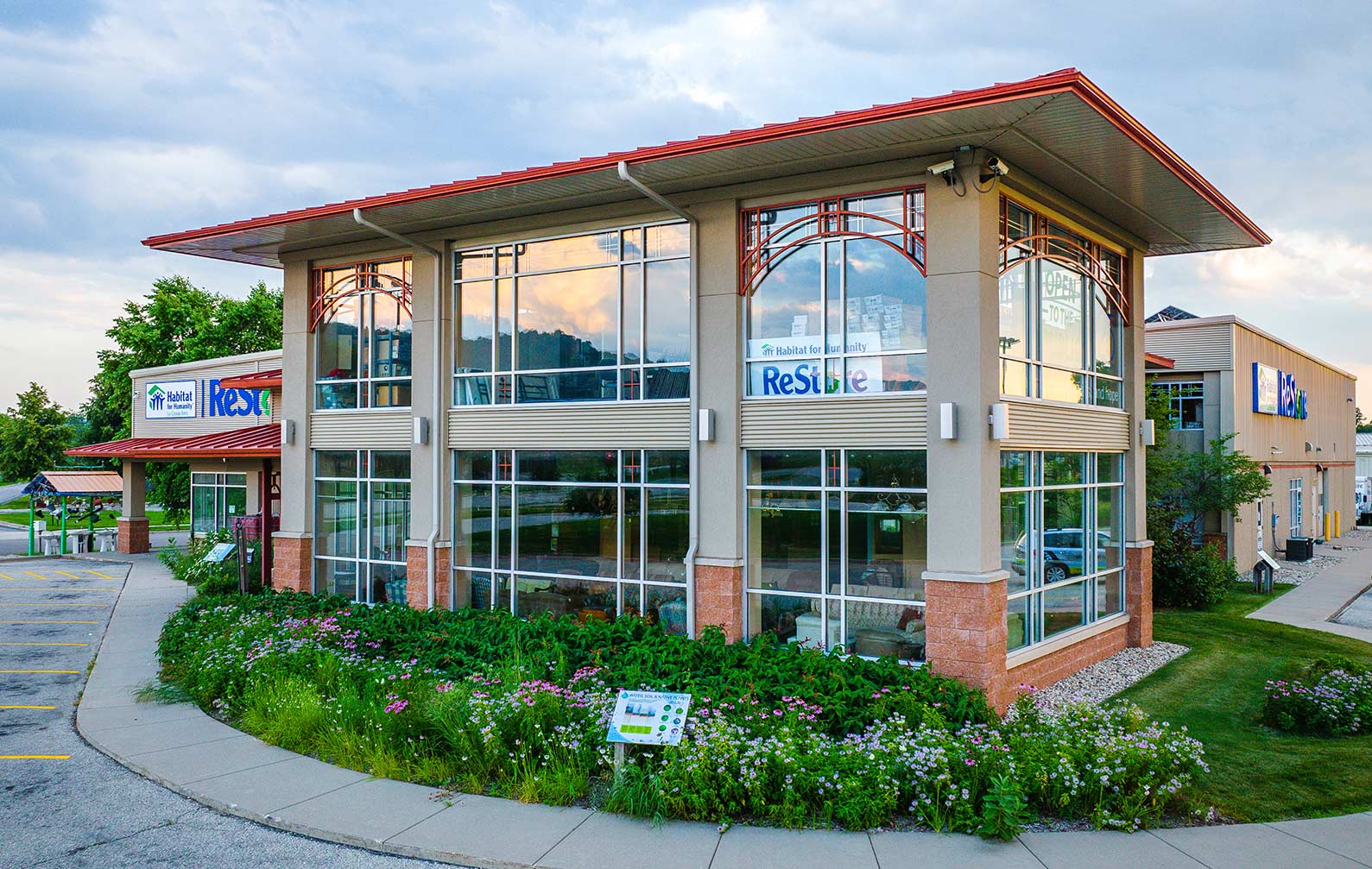
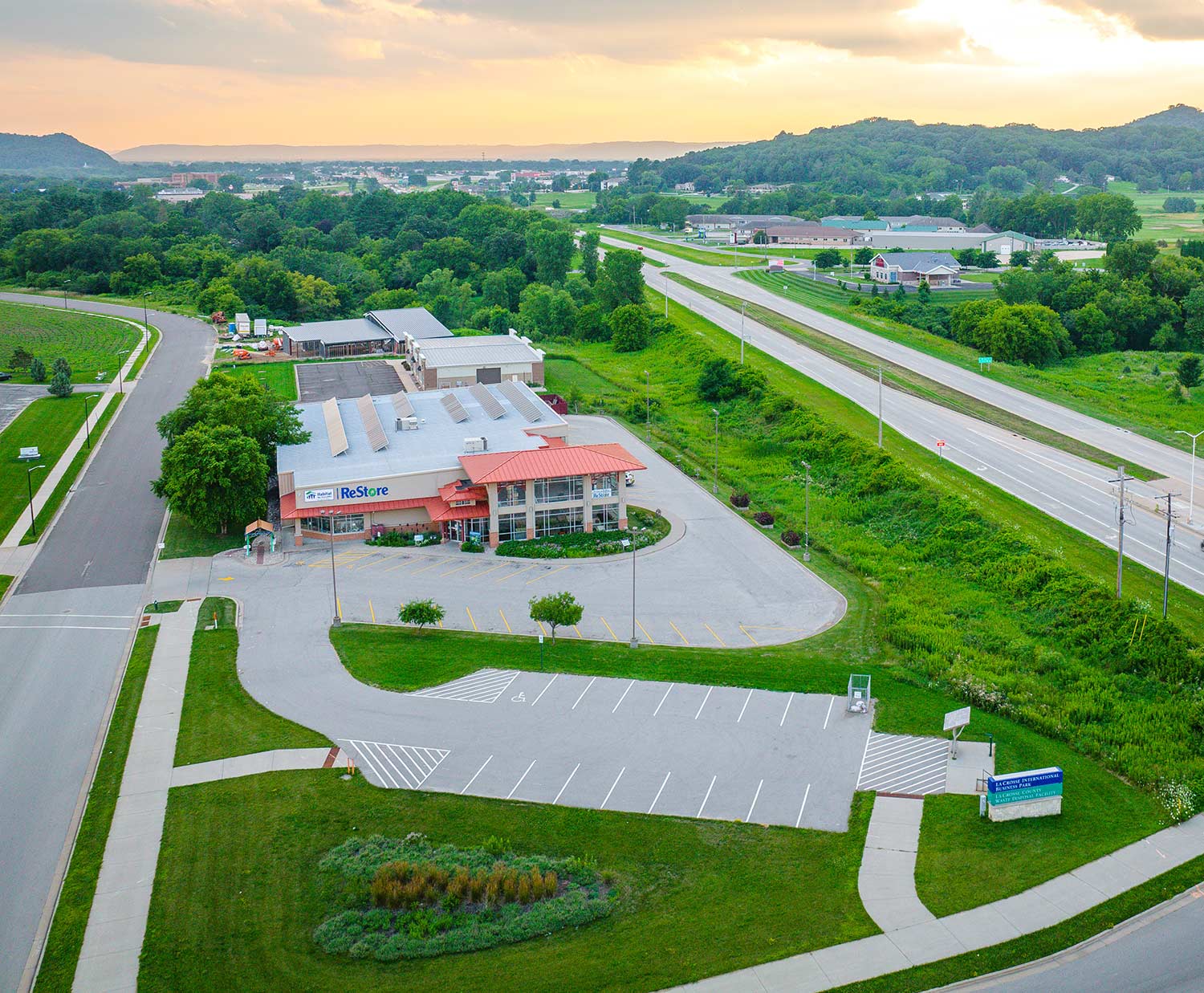
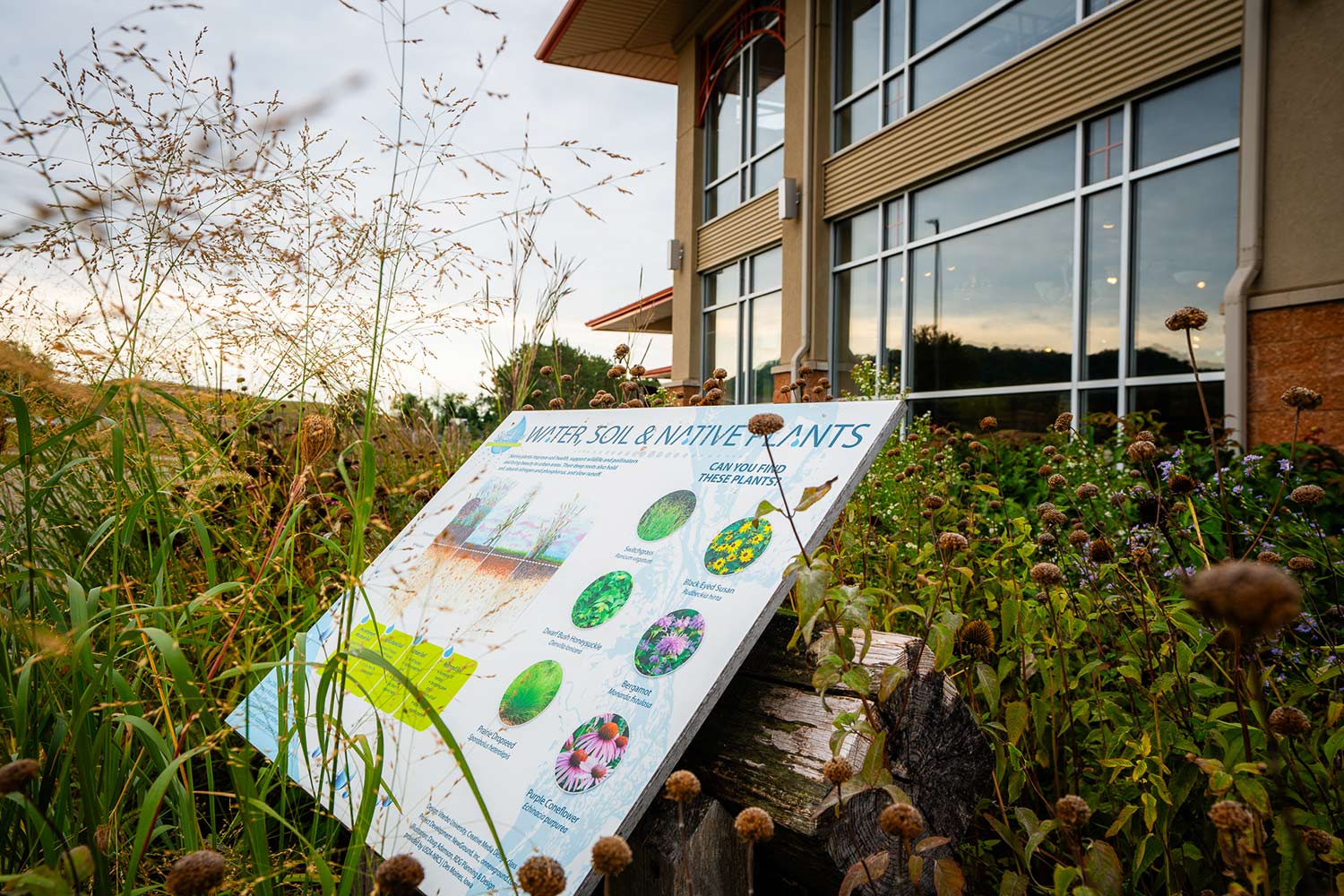
Interpretive signage surrounds the ReStore to educate visitors about sustainable practices. Some signs teach about rain gardens and native plants, and others about pollution in local streams and rivers. Even floor stickers inside the ReStore talk about energy efficient building practices.
We run on sunshine!
With the support of Hammond Climate Solutions Foundation’s Solar Moonshot Program, we installed a 144-panel solar array on the ReStore in 2020. Solar energy now powers the entire ReStore building, reducing our expenses and allowing us to invest more in our community.
- What is solar power? The sun radiates energy into space as light and heat, beaming more energy onto our planet every day than we need to meet the world’s energy needs for a whole year. At the ReStore, we capture that energy with a photovoltaic system.
- Solar power is clean, renewable, and cost-effective. Just 18 days of sunshine on earth equals all of the energy store in our planet’s coal, oil, and natural gas reserves.
Habitat for Humanity of the Greater La Crosse Region houses its offices at our ReStore location, and we work together to ensure a high level of recycling and reuse in our office.
In 2018, we retrofitted all lighting in the ReStore with LED lights to save energy and costs.
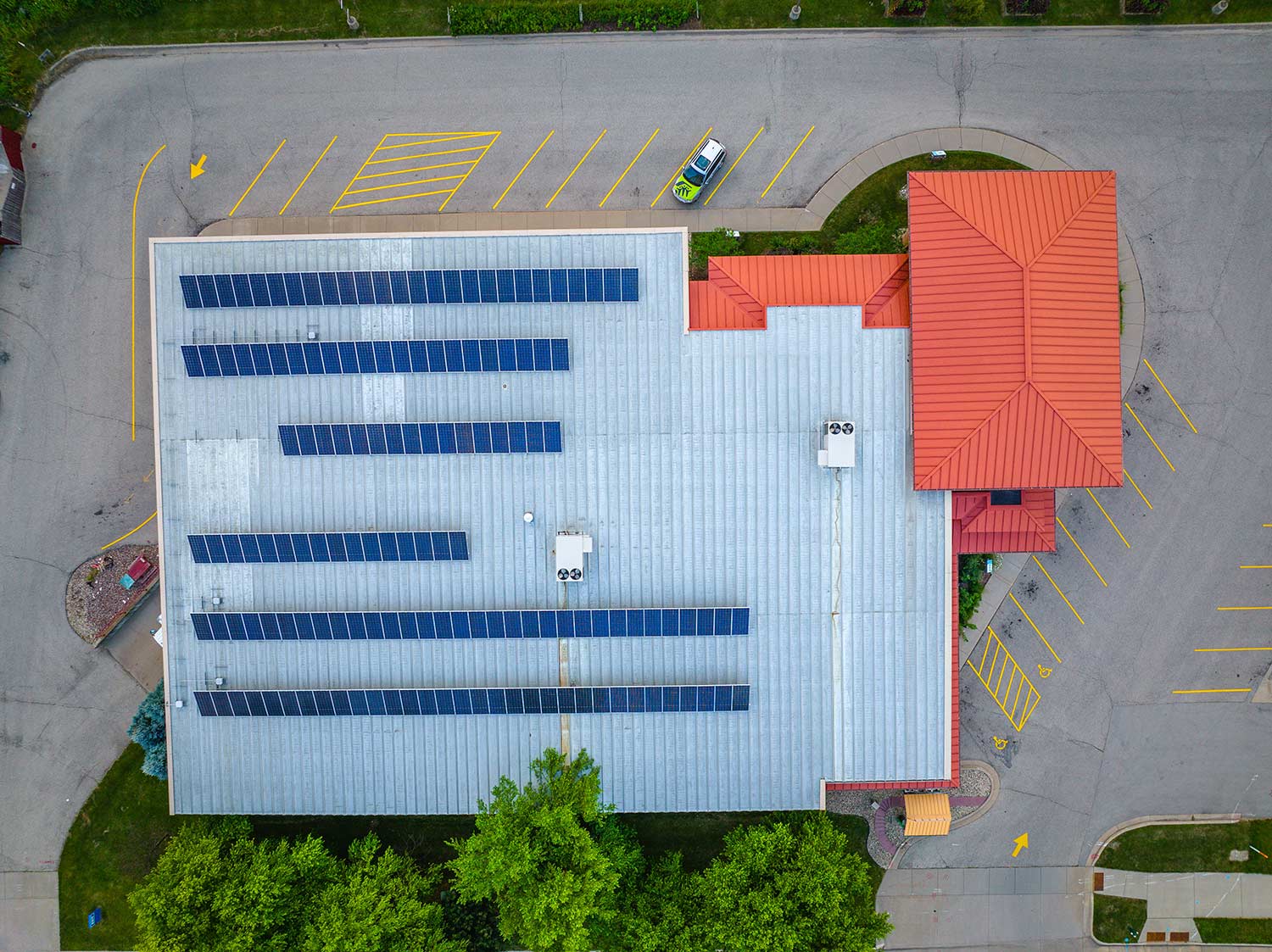
Reuse + Material Diversion
ReStore
Reuse is a key part of our business model. Our ReStore runs on donations of gently used building materials, furniture, housewares, hardware, and tools. Every item donated to the ReStore is one less item in the landfill. As of 2023, the ReStore has diverted over 9 million pounds from the landfill. On average, we divert almost 100,000 pounds per month.
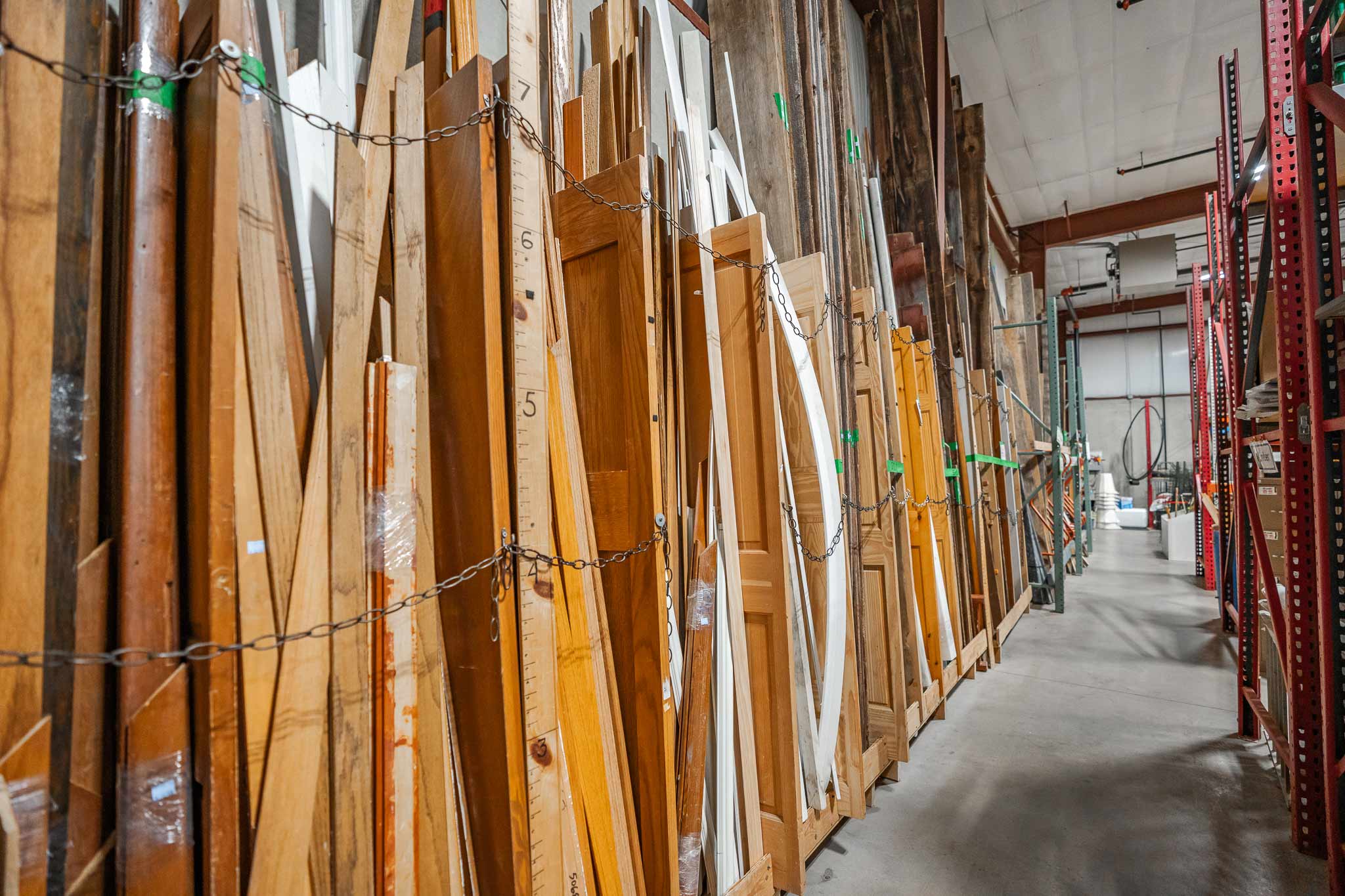
In May 2024, we partnered with the University of Wisconsin-La Crosse to launch a large-scale Dumpster Diversion pilot program and diverted 23,383 pounds of material in just 12 days. Read all about the project here.
Diversion is the first step; reusing diverted materials is the second. Why reuse? Just like people have carbon footprints—a cumulative total for the emissions they have generated—so do the products we buy. When buying a new product, consider the resources needed to manufacture and transport the product before it even gets to you. Think about the whole lifecycle of that product, from the moment its production begins to the moment it’s thrown away. This includes, but is not limited to, gasoline for transport, the raw materials to build the product, packaging, supplies to manage the product, and disposal.
By purchasing used, you help to extend the product’s lifecycle, reduce the number of new items that need to be placed into the market, and reduce carbon emissions that pollute our environment.
The La Crosse Habitat ReStore location is unique because we are neighbors with the La Crosse County Landfill. Our proximity to the landfill reinforces the importance of landfill diversion. Therefore, we have an amazing working relationship with the landfill. When the general public bring items to the landfill that landfill staff know would be useful at the ReStore, they send the public our way. We both want less items in the landfill, plus people save money when they donate to the Restore. Click here to learn more about the La Crosse County Landfill.
The ReStore also has a recycling room where volunteers disassemble various items that cannot be sold or fixed. This way, even more items are diverted from the landfill and the sale of recycled material generates more dollars we can put toward our mission.
ReClaim
Created in 2018, the ReClaim program builds on Habitat’s reuse efforts. ReClaim crews conduct salvage and deconstruction projects, carefully removing materials from buildings that are about to be demolished or renovated.
Materials collected through the ReClaim program are sold at the ReStore or used in our home construction projects. This model saves property owners money on dumpsters and disposal fees and disrupts the traditional make-take-dispose approach.
ReClaim projects have salvaged one-of-a-kind antiques and historic materials, capturing local heritage and important stories along with the material itself.
Home Construction
Habitat for Humanity’s homes also demonstrate our commitment to the environment. Habitat does not always build houses from the ground up, often we rehab existing homes. This saves material by reusing what is already available and reduces the waste from a full demolition. When we are involved in the total construction of a house, we use as much reclaimed lumber and other materials as we can from the ReStore.
All homes renovated and built by Habitat are certified through Focus on Energy. This decreases the reliance on fossils fuels while helping to save energy and money for future homeowners.
